The Best Waterproof Cameras for Capturing the Action in and around the Water
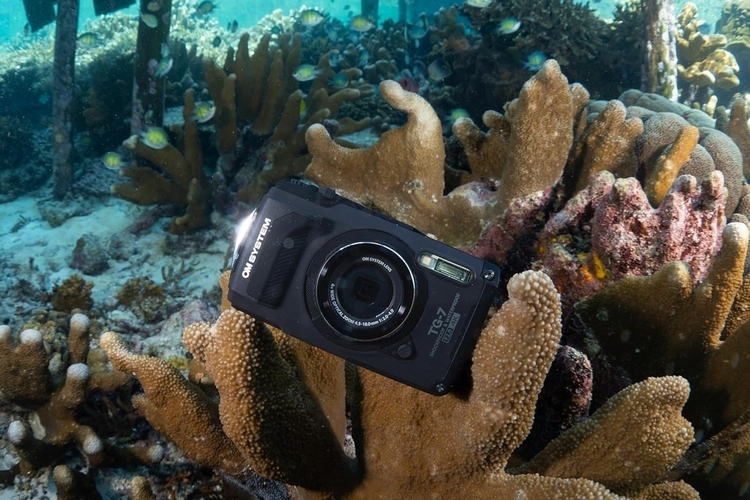
The best waterproof cameras are not necessarily the best cameras, but they do have their place in both photography and videography. There are times you’ll need to take photos or capture videos both in and around the water, after all. Same with doing outdoor shoots in inclement weather. Sure, you can buy waterproof housings for your mirrorless or DSLR camera. However, those housings aren’t exactly cheap, often retailing for north of four figures, which may or may not be worth the price, depending on your situation. Not to mention, you’re taking a big risk with your pricey professional camera, so waterproof alternatives often make for a more reasonable solution.
For many people, the best waterproof camera is whatever phone they already use. Modern smartphones have really good sensors and camera tech nowadays. Pair them with a waterproof case and that setup can go a long way towards letting you shoot in the wettest conditions.
Many people, however, still prefer a dedicated waterproof camera, largely because they’re built for precisely those kinds of shooting situations. That means, everything about them, from their bodies and lenses to their integrated electronics, are built precisely for use in the water. Oftentimes, waterproof cameras are also built to handle all sorts of rugged conditions, so they don’t just hold up to water, but also impact, extreme temperatures, and all sorts of other hazards.
Of course, there are definite trade-offs. More often than not, waterproof cameras are more compact, which means they fit in smaller sensors and fewer features. You just wont get the same advanced capabilities that come with your mirrorless and DLSR hardware, although there are definitely some options that will surprise you.
These are the best waterproof cameras you can get today.
Akaso Brave 7 LE
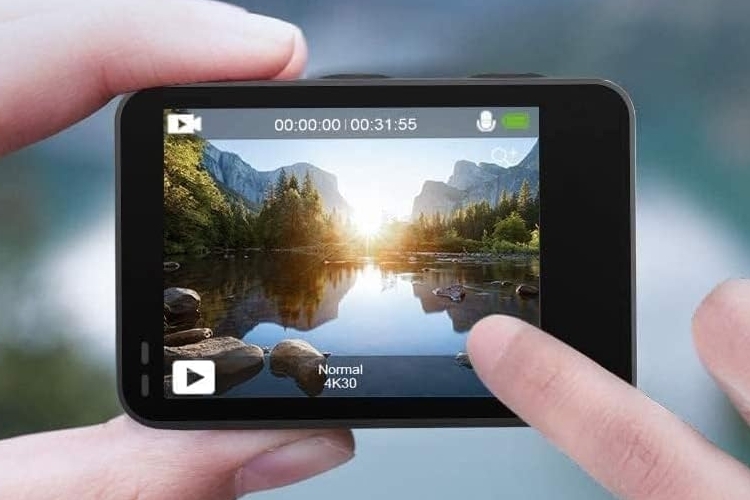
Pros
- Waterproof up to 40 meters (130 feet) with included case
- Good electronic image stabilization
- Plenty of included accessories
Cons
- Fogs when removed from wet case
- Clips videos in 10-minute segments
Sensor: Unspecified
Lens: Unspecified
Battery life: Around 40 minutes of video recording
Weight: 176g
If you’re on a tight budget, an affordable action cam with a waterproof housing, such as this model, might be your best option for a waterproof camera. The included case is rated to keep it protected at depths of up to 40 meters (130 feet), so you can use it even for most activities in the water, including many commercial scuba dives. Do note, you can’t take the camera out of the case unless you’re done shooting in the water, since it tends to fog up when the case is opened wet, requiring you to dry the whole thing before putting the camera back in to get it in a usable waterproof state.
The rest of the action cam is actually pretty impressive for the price. It shoots 4K 30fps video and takes 20MP photos, dual screens, complete with all sorts of shooting modes on tap. Features include dual touchscreen displays (front and back), built-in Wi-Fi, and a whole host bundled accessories (including an extra battery).
Kodak Pixpro WP2

Pros
- Waterproof up to 15 meters (49 feet)
- 4X optical zoom
- Easy to use
Cons
- Only shoots 1080p
- Only supports microSD cards up to 32GB
- Doesn’t offer a lot of settings adjustments
Sensor: 1/2.3-inch CMOS
Lens: 27-108mm (equivalent)
Battery life: 200 images
Weight: 176g
A waterproof point-and-shoot, this waterproof camera has a chunky body that also renders it shockproof, ensuring it can handle all the bumps and drops that come from shooting outdoors. It’s rated for depths of up to 15 meters (49 feet), too, so it’s good enough for snorkeling and some light diving. It shoots 16 megapixel photos and 1080p video at 30 fps, which aren’t exactly stellar quality in 2024, although both photos and videos taken on this looks really great, with good color reproduction and a surprising amount of detail. We really appreciate the 4X optical zoom, which is incredibly useful when shooting faraway subjects in the water, eliminating the need to move so much closer like you would on a typical action cam that only has digital zooming. If you don’t fiddling with controls, you’ll love this camera, since most features are set up to work with minimal input, relying instead of more basic settings to simplify things when you’re in the water.
GoPro Hero 12 Black
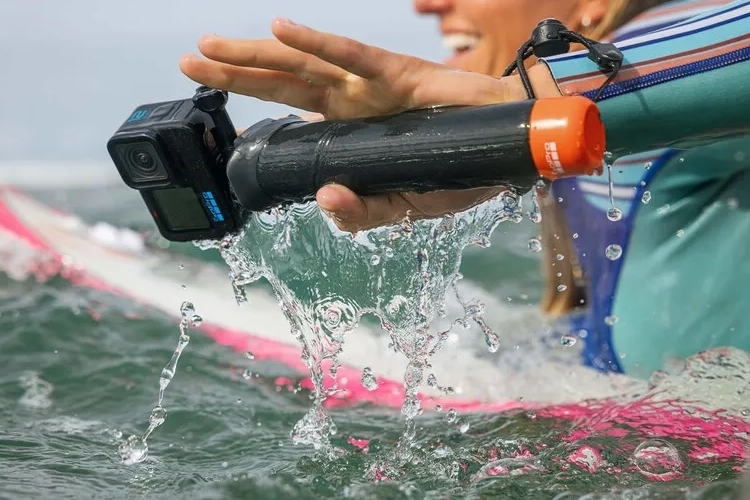
Pros
- Waterproof up to 10 meters (33 feet) without any extra housing
- Shoots 5.3K video in 8:7 aspect ratio
- Feature-packed
Cons
- Video quality not as good in low-light scenes (e.g. underwater)
Sensor: 1/1.9-inch
Lens: Unspecified
Battery life: 155 minutes of video at 1080p 30fps
Weight: 5.4 oz (154g)
GoPro makes the best action cams hands down. They make excellent waterproof cameras, too, with the ability to submerge up to 10 meters (33 feet) with no need for a special case. There’s an optional waterproof case, of course, which extends its diving ability to 60 meters (196 feet) if you really need to shoot way down there. The newest GoPro can shoot 5.3K video at 60fps both in and around the water, complete with HDR, GP-Log, and 10-bit color mode, allowing you to not just shoot crisp and smooth footage, but also maintain control over a lot of shooting variables. The best part about using GoPro is you benefit from all the features they’ve developed through the years, from the incredibly good image stabilization and horizon locking to the slow-motion and light painting modes to a whole host of others. Do note, the GoPro still does its best work on the surface of the water rather than under it, as the darker scenes underwater just aren’t really this action cam’s big strength.
OM System Tough TG-7
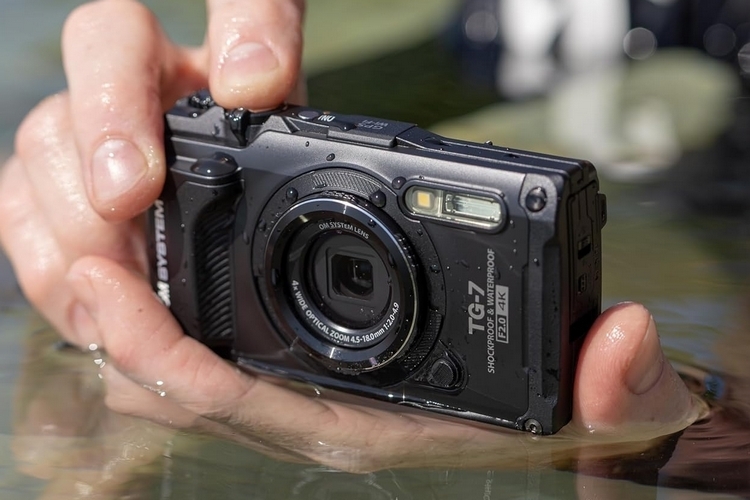
Pros
- Waterproof up to 15 meters (49 feet)
- 4x optical zoom
- Plenty of features
- Excellent underwater shots
Cons
- Not much of an upgrade over its predecessor, the TG-6
Sensor: 1/2.3-inch
Lens: 25-100mm (equivalent)
Battery life: 330 shots
Weight: 8.8 oz (249g)
To the unfamiliar, OM System is the name Olympus cameras go by nowadays and they make some of the best waterproof cameras in the market. This model, for instance, takes 12MP stills that have good color reproduction and saturation, complete with plenty of details, while an auto-exposure mode makes it easy to take those low-light underwater shots with an impressive amount of detail in tow. It also captures images in RAW format, so you get a lot of room to make adjustments in post. For videos, it can shoot 4K at 30 fps and 1080p at 120 fps, so you get both a 4K option and a slow-mo option for versatile performance in the water.
It’s feature-packed, too, with a Field Sensor system that can record GPS, thermometer, barometer, and compass data, along with your captures. There’s a Pro Capture mode (buffers images when half press the shutter), focus stacking, and even 4X optical zoom, along with a whole host of others for folks who like to fiddle with their cameras just a little bit more.
SeaLife Micro 3.0
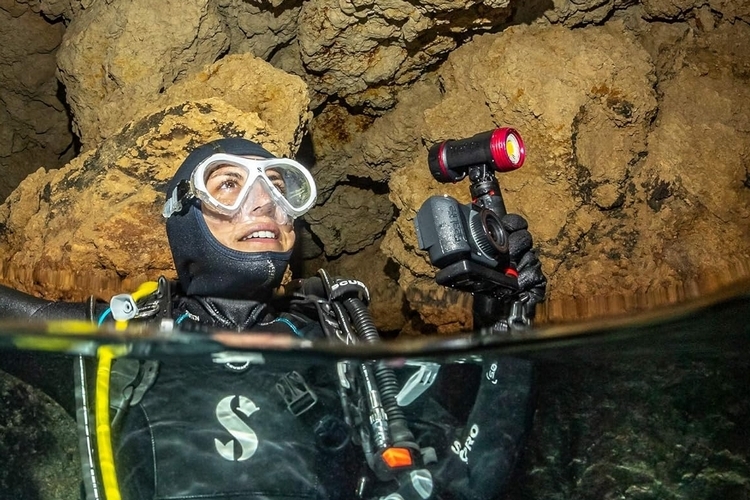
Pros
- Waterproof to 60 meters (200 feet)
- Permanently sealed
- Designed specifically for underwater capture
Cons
- No zoom capabilities
- Small screen
Sensor: 1/2.3-inch
Lens: 19mm (equivalent)
Battery life: three hours of 1080p 30fps video
Weight: 11.6 oz (329g)
If you want a waterproof camera that can handle diving at great depths, then this model from SeaLife has you covered with its ability to operate at depths of up to 200 feet. It’s permanently-sealed without a single O-ring in tow, so there’s no danger of water ever seeping through, with the shock-resistant body fully covered in rubber armor, so it’s rugged enough for both water and land alike. We especially love the simplified interface and menu, with massive buttons that make it easy to use underwater.
It shoots 16MP RAW images with impressive quality even at great depths, provided you remember to activate the “underwater mode.” Same goes for video, which it can capture at 4K 30 fps and 1080p 120 fps. Do note, this is a camera that’s tuned to do its best work underwater, so shooting in land mode might not turn out the best captures. Then again, the “underwater mode” is the whole reason you’re getting this thing and it performs splendidly on that end.


Comments are closed.